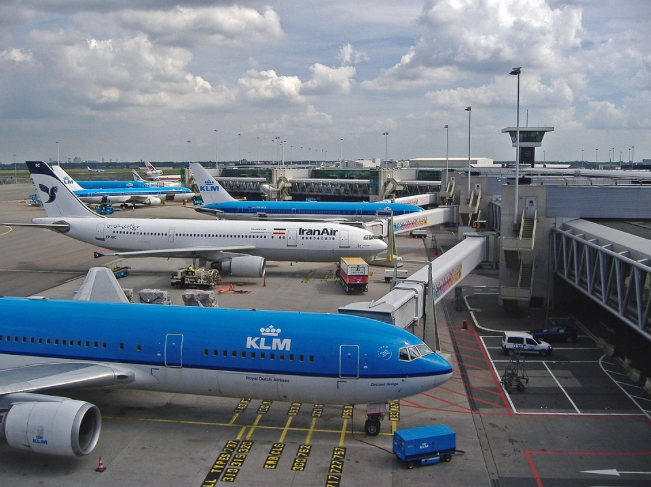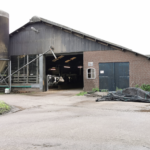(First published on March 19, 2018)
Anna Berti Suman
The Amsterdam Schiphol Airport, representing the fourth airport in Europe in terms of passengers and air transport and the third European airport in terms of goods, has generated technical, political, economic and social discussions about its expansive policies since its inauguration in 1916. The airport is owned by the “Schiphol Group”, a limited liability company which, together with Royal Dutch Airlines KLM, controls the airport’s expansionary policies. With the advent of the deregulation in the aviation sector in the early 90s, the Dutch government had to balance the interest of the national growth linked to airport expansion with the objectives of ecological sustainability. Currently, the sector is regulated – among others – by the Noise Abatement Act (Wetgeluidhinder), the Space Planning Act (Wetruimtelijke Ordening) and the Aviation Act (Wetluchtvaart), which from 2019 will be replaced by a single legislative framework, the Single Law on Environmental Planning (Omgevingswet; Staatsblad n.156). The legislative intervention aims precisely at balancing the protection of the environment and the conservation of the ecosystem with the interests linked to economic growth.
In order to counterbalance these opposing interests, a scheme based on the so-called “dualbeleidsdoelstelling” (dual political objective) was adopted at the national level. This approach has led to the creation of numerous collaborative bodies aimed at tackling complex problems and taking difficult decisions regarding the environmental impact of the airport. An example of such structural interventions aimed at creating a dialogue between the interested parties is the Alderstafel (Alders Table), founded in 2006 and still existing. The Alderstafel, named after its former minister and social democrat president Hans Alders, is a consultative body composed by representatives of the public sector, citizens and businesses. Specifically, the Ministry of Infrastructure and the Environment forms the Alderstafel for the first category. The municipalities potentially affected by the expansion, namely the Municipalities of Haarlemmermeer, Amstelveen, Uitgeest and Amsterdam, united in the Bestuurlijke Regie Schiphol (Address Commission for Schiphol) are also represented. Among the commercial parties, the representatives of the Schiphol Group, KLM and Air Traffic Control The Netherlands (LVNL) join the Table. Finally, the civic component is represented by the Schiphol Regional Advisory Committee and the Association of Consultative Platforms, reflecting the interests of the residents of the areas surrounding the airport.
The experience of Alderstafel produced in 2008 a leading opinion on the future expansion of Schiphol for the period comprised between 2008 and 2020. The opinion, adopted unanimously by the participants of the Alderstafel, was presented on October the 1st 2008 to the Dutch Government and to the Dutch Lower House, which subsequently translated the opinion into agreements on limits to Schiphol’s growth and environmental impact. These agreements included a series of measures to limit noise disturbance in the medium and short term for the sake of the residents’ health and wellbeing, such as changes to routes, microclimatic approaches for limiting the local disturbance, measures to combat ground noise and higher fares for noisy aircrafts and night flights.
Experiences such as that of the Alderstafel find their justification in the right to participate in the res publica recognized to all citizens, a right which is not expressly formalized in the Dutch Constitution (Grondwetvoorhet Koninkrijkder Nederlanden). As a matter of fact, the Constitution seems to be limited to enunciate the right to hold a public office (Art.3), to elect (Art.4) and to present petitions (Art.5). Furthermore, also the right to health and to live in a healthy environment entail the right to participate in decisions that can affect such rights. While recognizing these rights, the Dutch Constitution seems to assign a primary role to the authorities designated for this purpose with regard to the protection of the environment (Art.21) and health (Art.22). Consequently, a constitutional recognition of a more active role of the citizen in defending these rights is missing. As Michels[1] pointed out, citizen participation in the Dutch system, although recognized as an element contributing to the strengthening of democracy, is nevertheless often limited to representative democracy. Michels and De Graaf[2] tackle the issue by observing how citizen participation in decision-making often plays an “instrumental” rather than expressive purpose. This would derive from the fact that participatory projects are frequently designed by the government and not by citizens. The authors point out that, in most of Dutch participatory decision-making experiences, as the Alderstafel, citizens have the opportunity to contribute to decisions by providing information and suggestions, without however changing the vertical structure of the decision-making process.
This contribution suggests that a more ‘bottom-up’ application of participatory tools to the formal decision-making process in the case of infrastructural projects with environmental impact (in this case, noise pollution) would ensure that citizen participation is not a mere “democratic experiment”. To this end, an experience of civic participation from below is contextualised and problematized, in view of searching a proactive rather than passive citizen inclusion. The experience at issue regards a group of inhabitants living in the surrounding of Schiphol who decided to challenge the claim by the Dutch Government that noise could not be measured, but rather just calculated on the basis of mathematical estimates. In the name of the right to live in a healthy environment, citizens created a system of microphones positioned on the roofs of their houses to obtain evidence of noise impact on their quiet. Through Wi-Fi connection, such information on noise levels was sent from the microphones to the residents’ computers, which in turn transmitted this data to a central server via the network. The collected noise data was subsequently recorded on a website (currently called “Sensornet”). The publicly accessible website allowed users to view graphs of noise pollution in the surroundings of the Schiphol area, either in their entirety or specifically for each microphone. Difficulties in conducting the measurements, such as the problem of interference from other noises, were solved by triangulation methods in the arrangement of the microphones for each measuring station. Being an initiative based on unsophisticated technologies, there was the problem of microphones calibration and accuracy of the collected data. However, the detail and granularity of the information provided by the visualization of the acoustic loads recorded in 25 observation points during continuous periods compensated for possible technical weaknesses.
The initiative attracted the attention of a wider audience, composed not only of activists and local inhabitants, but also of influential non-governmental organizations, the press and public bodies. The platform from a local initiative became a noise measurement infrastructure at the national level. At the local level, numerous municipalities opposing the system of noise assessment supported by the government, adhered instead to the system born ‘from below’. A professional foundation, “Geluidsnet”, took over the “Sensornet” platform in order to create a joint venture between the bottom-up noise measurement infrastructure and 10 municipalities located in the affected areas. “Sensornet” currently appears as an established noise measurement platform that lists, among its customers, numerous Dutch municipalities (such as Gemeente Zoetermeer, Borne and Pijnacker-Nootdorp) and government organizations such as RIVM (the Dutch Institute for Health and the Environment) and ProRail (the public organization in charge of the Dutch railway network). Although the majority of “Sensornet” customers are now governmental organizations, the platform still provides an easy and accessible method for citizens to actively contribute in the measurement of noise pollution.
Although there has not been a substantial change in how the Dutch Government is assessing the noise, it is interesting to mention some concrete actions taken by the Schiphol Group that seems suggesting a greater attention to the interests of the citizen. For example, the airport has introduced specific flight techniques (routing) for departure and landing aimed at reducing the noise. In addition, the airport intends to minimize the background noise generated at the take-off of the planes through the use of specific barriers (ridges) adjacent to the slopes.[3]
The discussion on a proper appreciation of the contribution of the concerned citizens in the assessment of noise seems particularly timely at present days when the expansion of Lelystad Airport is under discussion. The Schiphol Group, also owner of this latter airport since 1993, today plans to expand Lelystad Airport in order to accommodate up to 10,000 flights in 2019, which is expected to become 45,000 flights in the following decades. Various activist groups oppose the expansion due to the project’s feared environmental and public health impact. To date, the Dutch Government still seems to prefer a calculation of the noise disturbance rather than its measurment.[4] Overall, it appears that the bottom-noise monitoring initiative had significant effects on local and national politics. However, Lelystad’s current expansionary agenda indicates that, in the Netherlands, the effective inclusion of the citizens in the decision-making process over infrastructural projects with high environmental impact is still scarce.
The present contribution through the analysis of two participatory tools, one from the top (the Alderstafel) and one from the bottom (the “Sensornet” noise measurement system), highlighted how citizens’ participation in environmentally impacting decisions can have a merely passive or, rather, a proactive role. In the first case, there is the fear that citizen participation becomes limited to a mere democratic experiment, an experiment that would not satisfy the citizens’ needs and would not lead to the resolution of the conflict. On the other hand, experiences of ‘bottom-up’ civic participation, although more responding to the needs of the citizen, would be more difficult to be accepted by the institutions responsible for managing the environmental issue.
Such participatory experiences aimed at creating a dialogue between interested parties in order to prevent or manage possible environmental conflicts could qualify as environmental mediation. Yet the experience of the Alderstafel,although representing a successful form of environmental mediation, nevertheless lacks the ability to ensure a proactive citizens’ contribution. Differently, the second experience, “Sensornet”, has effectively reconciled the needs of the local authorities, the municipalities concerned, with those of the citizens. Nonetheless, such bottom-up initiatives, as tending to reverse the vertical decision-making process, are difficultly compatible with the institutional status quo, as also proven by today’s expansion agenda of Lelystad Airport.
[1] Michels, A. (2006) ‘Citizen participation and democracy in the Netherlands’, Democratization (13)02: 323-339, doi: 10.1080/13510340500524067, p.323.
[2] Michels, A. & De Graaf, L. (2010) ‘Examining Citizen Participation: Local Participatory Policy Making and Democracy’, Local Government Studies (36)4: 477-491, doi: 10.1080/03003930.2010.494101, p.488.
[3] Schiphol Group (2018) Buitenschot – From ground noise reduction to land art park.
[4] De telegraaf (2017) Fouten bij berekening geluid Lelystad.
———————————-
This post is partly inspired by the article published by Anna Berti Suman and titled “Challenging risk governance patterns through Citizens Sensing: the Schiphol Airport case”, recently published in the journal “International Review of Law, Computers & Technology” with ISSN: 1364- 6885, DOI: 10.1080/13600869.2018.1429186.



